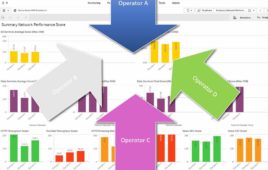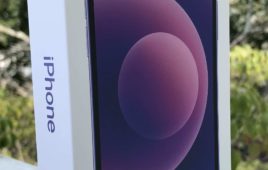Verizon is working to get its LTE network off the ground – literally.
The carrier on Thursday announced a new initiative – complete with trials and a certification plan – to makes its LTE network available for in-flight connectivity.
According to Verizon, the ability to connect to LTE in the sky would allow a number of aerial Internet of Things (IoT) use cases. For example, unmanned aerial systems and vehicles might conduct site inspections of pipeline and high-voltage wires, provide aerial imaging for farmers and aid first responders in emergency response and disaster recovery situations, the carrier said.
Verizon said it has been working on in-flight LTE since 2014, and in 2016 teamed up with American Aerospace Technologies Inc. to test connectivity between aerial platforms and its LTE network. The carrier said an initial trial was conducted with an unmanned plane with a 17-foot wingspan. That experiment tested advanced aerial inspection techniques along rural pipeline in Virginia, which Verizon said could be applied nationwide.
As a result of the trial, Verizon concluded its 700 MHz 4G LTE network is “safe” for in-flight wireless connectivity and moved to create safety and service requirements for certification on its network.
Once federal regulators allow UAV operation beyond visual line of sight, Verizon said it will begin testing command and control communications for long-distance UAVs.
“By scaling the systems required to connect UAS and UAVs to our LTE network nationwide through our ALO initiative, we’ve set the stage for a wide range of applicable solutions to be delivered via our ThingSpace open development platform across multiple sectors,” Verizon Senior Vice President of Enterprise Products and IoT Mike Lanman said.
To become certified to operate on Verizon’s network, devices must meet the carrier’s Open Development requirements for wireless connectivity and usage on its LTE network. Once Verizon certifies a device has met this criteria, it will be listed on the company’s Open Development Portal. Verizon said certified aerial devices can be used by being mounted on a UAV, as an add-on device to the UAV or in conjunction with a low-altitude manned aircraft in accordance with compliance with other applicable rules.
The carrier noted its Verizon Ventures branch has already invested in two companies that function in the aerial vehicle space, including Skyward, which connects drones and their operators with regulatory and insurance compliance and safety information, and PrecisionHawk, which provides aerial data and safety platforms for drones.
But Verizon isn’t the only one looking to make its LTE network airborne.
AT&T in February began testing drones on its LTE network with Intel, and in July launched drone trials to look into the possibility of using drones to improve cellular coverage at large events and in disaster situations.




